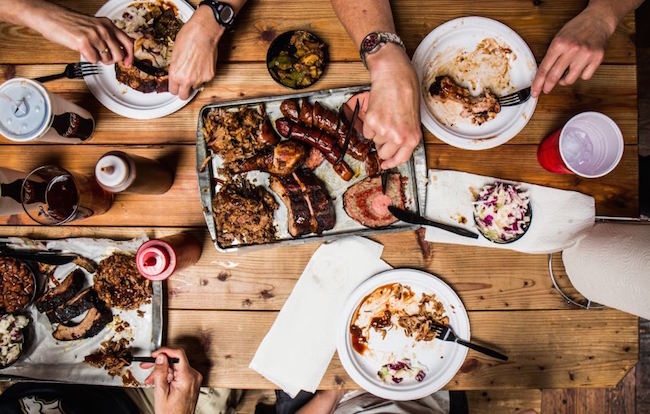
I’ve often said that opinions are like butts — everybody has one.
And when it comes to barbecue, nearly everyone has an opinion. My views will likely cause a slew of debate, but one thing is certain: cooking and eating great barbecue is nothing short of delicious. Whew, at least we can all agree on one thing.
Being from Nashville, I tend to liken everything to music. So, in the band of barbecue brothers, I like to say that ribs have long served as the lead singer of the group — beloved by all, but quite finicky in terms of preparation and consistency. Lately, beef brisket has served as the lead guitarist — earnestly trying to snag some of the spotlight, but still a notch down in overall popularity. My barbecue preference tends to shun the bright lights altogether, focusing more attention on those towards the back of the stage — call ‘em the bassist or drummer — humbly keeping everybody in time with a steady beat of consistency. I’m talking about the pork butt.
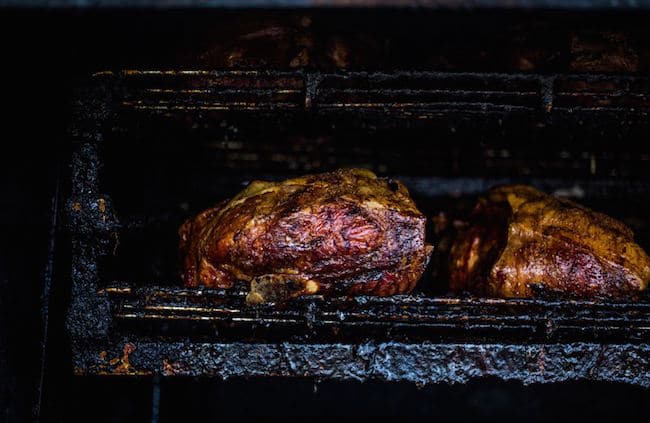
Pulled, chopped, sliced, dry rubbed, or sauced, I believe that the pork butt is the veritable cornerstone of southern barbecue. It’s a humble cut — better said, cheap — but when cooked low and slow, or potentially hot and rather fast, you’ll soon discover that the tender, delicate meat can be transcending. Incredibly versatile, the yield from a pork butt is just as good sandwiched between white bread or tortillas, as it is a hefty topping for loaded nachos or a steamy bowl of ramen. The pork butt does not discriminate, it simply adds a heavy dose of love wherever it appears.
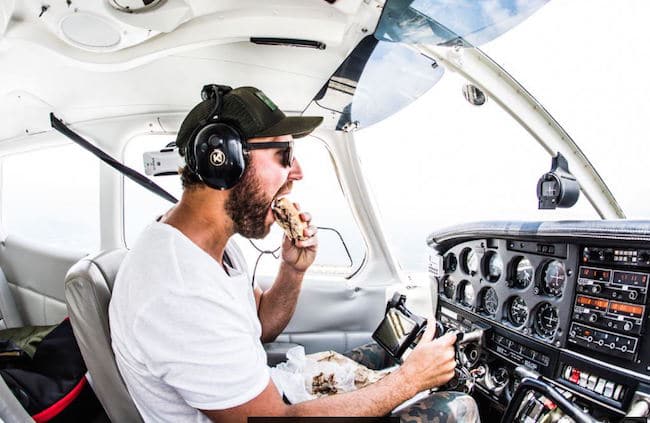
I thought it important to set out on the open road — and the friendly skies — to explore how this cut is cooked throughout all twelve states of the commonly agreed upon, yet still debated, “barbecue belt.” What I discovered is that no two butts are alike. Along the way, I ate a lot of great food, and of course, garnered some incredible secrets and recipes. Most importantly, I met a lot of the great pitmasters, men and women alike, from all walks of life and heritage, who carry on the grand tradition and responsibility of cooking up and serving great southern barbecue.
In the recipes that follow, I’m sharing my guide on how to make the most of your butts. As you will soon discover, the cut is ultimately forgiving, approachable, and downright delicious. So, here’s a sneak peak into some of the stories and recipes featured in my new book, The South’s Best Butts: Pitmaster Secrets for Southern Barbecue Perfection.
Listen to My Podcast With Matt
The Cut
What’s in a name? Well, for those thinking that the pork butt comes from the rear, you are mistaken. Pork butts are actually derived from the pork shoulder. Rumor has it that back in the day, these shoulder cuts were salted and preserved and packed in barrels. The packed barrels, or butts as they were called, soon lent their name to their contents as well — and what’s now most commonly called a pork butt, or Boston butt, was born.
Typically found in 10-12 lb. hunks, containing the shoulder bone, I often find my butts at most grocery stores for less than a buck a pound — probably one of the cheapest sources of protein you can find these days. The yield from a properly cooked butt can certainly serve an entire family and friends — usually yielding plenty of leftovers.
Equipment
My kitchen philosophy has always revolved around simplicity. I’m a big believer that one does not need to possess a bunch of fancy, expensive equipment to churn out a great meal. Fortunately, that philosophy was only reinforced throughout my travels.
Though I certainly encountered commercial smokers that run into the tens of thousands of dollars, I also came across many cinder block pits, fastened with steel plates welded by hand. The truth is, both devices have the potential to create either great or subpar barbecue.

Skip Steele, a larger-than-life pitmaster and proprietor of both Bogart’s and Pappy’s Smokehouse in St. Louis, Missouri probably summed it up best when he said, “Cooking is a math problem. Time + Temperature = Results.†Thus, a properly cooked butt is more the result of proper time and temperature control than anything else.
Purists will argue that using wood, and wood only, burned down to coals for fuel and flavor is the only true form of barbecue. The idea is that as the meats slowly give up moisture and fat during the cooking process, the drippings fall to the glowing embers, perfuming the meat in smoky, fatty-flavored goodness.
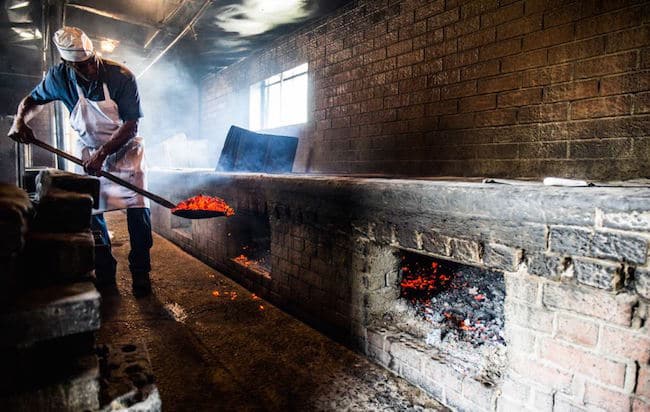
I tend to side with the purists. The old fashioned method of cooking with only wood certainly requires more time and effort — something I believe is worth savoring and preserving. That said, I ate some fantastically consistent ‘cue from natural charcoal, gas, or hybrid style smokers. The use of natural charcoal (no briquettes, please) eases the effort of using traditional dried wood. And, well, using gas to maintain an unbelievably precise temperature control produces unbelievable consistency. Plus, many gas smokers still allow for the use of real wood to impart the necessary smoke and flavor.
I go into this description knowing that many of you do not possess expensive commercial smokers, nor do you have the space to dig a pit in your backyard. If you are proud of your expensive egg, or komodo style cooker — more power to you. If your $50 kettle grill embarrasses you — take no shame. No matter what you own, become a master of temperature control, and you will soon churn out great barbecue.
On temperature, I found that nearly every pitmaster had a different preference. The common agreement I received from most folks, though, was that a fire should never exceed 300 degrees F.
On average, a pork butt needs to be cooked approximately 1 hour per pound — or until the butt reaches an internal temperature of 200 degrees F. The bone should easily pull clean from the meat, with little to no resistance. Using a fork or hands, the meat should literally pull into bite-sized shreds, hence the name, pulled pork.
The Rub
Though smoke will provide most of the flavor, most pitmasters rely on a secret dry rub to help impart even more unique flavor. For many, the rub stands alone — no sauce is needed during, or after cooking.
Teresa Cranmore, a female pitmaster at Squealer’s BBQ in Meridian, Missouri says, with a bit of a laugh, that “my husband told me that sauce was something only women used to put on meat that has been burned.†Shockingly, she’s still married to the same guy — I did not seek his marital advice during my visit!
In the Carolinas, rubs are shunned altogether, as the meat is chopped while hot apple cider vinegar, salt, and crushed red pepper is folded in for flavor.
How to Cook and Serve Pork Butt
Now that you’ve got an overview of the wonders and cooking methods surrounding this great cut of meat, it’s time to actually make a delicious pork butt yourself. Below you’ll find tips and recipes from around the country for cooking the butt, flavoring it (take your pick of rub and/or sauce), and serving it up to delighted guests (and yourself!) to enjoy.
Can’t-Miss Pork Butt

I feature a dozen or so pitmaster-vetted versions of pork butt in the book, so I thought I would share a foundational recipe based on my discoveries from the road. One of my favorite of these discoveries was the “Texas Crutch†method, whereby the butt is wrapped in foil in the event of an emergency: a) the butt took on too much smoke, b) the fire was too hot, or c) you need to speed up the cooking process. Using foil will provide a protective layer, preventing the butt from taking on too much smoke or char. It also locks in moisture, which in certain instances can speed up the cooking process by incubating the meat. You can use the “crutch†whenever necessary, or forget it altogether.
Ingredients
- 1 8-10 lb. pork butt
- Dry rub (your preferences; if working with the rub recipe below, use 1/2)
- Aluminum foil (see above)
Directions
- Prepare a smoker, or grill for indirect heat, bringing internal temperature to 275 degrees F.
- Rinse the butt in cold running water, and pat dry. Using your hands, liberally work the rub into every crevice of the meat.
- Smoke the pork, covered, over indirect heat, maintaining a consistent temperature inside the smoker of 275 degrees F, for 12-14 hours, or until a meat thermometer inserted in the thickest portion registers 200 degrees F.
- Remove the pork from smoker, let stand 30 minutes. Remove and discard the bone and fat cap. Pull the pork by hand, reserving meat for desired use.
Big Butts Pork Butt Steak
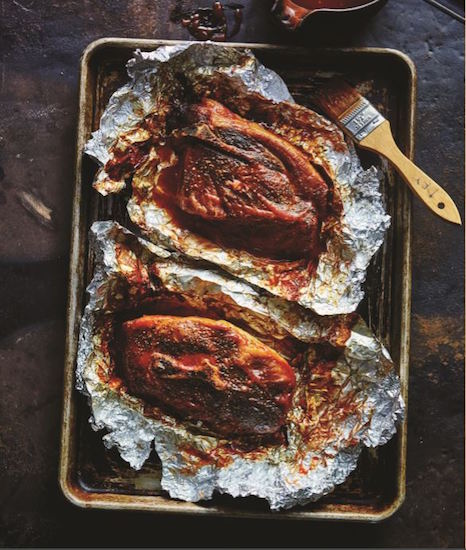
Not all pork butts take a dozen hours to prepare. In Leachville, Arkansas I met the Robertson family, proprietors of Big Butts BBQ, who specialize in pork butt steaks. Yes, steaks. When you get the meat, ask your butcher to cut the butt into 1 1/4-inch steaks, and your life will soon become much better. Using this method, you can soon cook up a different version of the butt that is sure to please. By breaking the butt down to a smaller size, and cooking it with a hotter temperature, you can transform the pork butt from a weekend undertaking to a no-hassle weeknight meal. Oh, and take all that nonsense I said earlier about not using charcoal briquettes and throw it out the window. Pitmaster Forrest Robertson swears by ’em, and based on the taste of his food, I can’t argue.
Ingredients
- 1 pork butt, cut into 1 1/4-inch steaks, approximately 6-8 steaks
- 3 tsp. kosher salt
- 3 tsp. freshly ground black pepper
- Sauce, if desired (see below)
Directions
- Light briquettes in a charcoal chimney starter. When charcoal is covered with grey ash, pour onto bottom grate of grill, and then push to one side of the grill. Brush top grate with oil, place on grill, and heat to 350 degrees F.
- Sprinkle the pork steaks evenly with the salt and pepper, and place over indirect heat. Grill, covered, 45 minutes. Place each steak on a large piece of aluminum foil, and top evenly with sauce, if using. Tightly wrap the steaks in foil, and grill, covered, about 1 1/2 hours or until tender and a meat thermometer registers 205 degrees F.
- Remove the steaks from grill, and let stand in foil 30 minutes. Serve with additional sauce, if desired.
Old-School Butt Rub
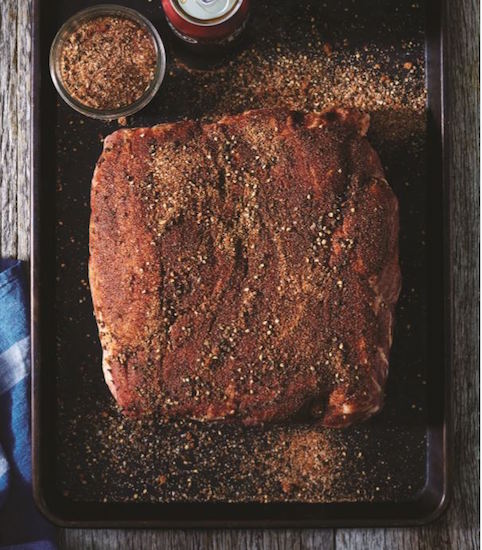
I’m a fan of a good dry rub — so I was happy to get this standard classic from Skip Steele, which he affectionately calls his Old-School Butt Rub.
Sweet and savory, with plenty of aromatics, this all-purpose rub provides the perfect seasoning for any pork butt. Be sure to season liberally, using your hands to work the seasonings into every crevice of the cut.
- 2 Tbsp. granulated sugar
- 2 Tbsp. kosher salt
- 2 tsp. smoked paprika
- 1 tsp. freshly ground black pepper
- 1 tsp. chili powder
- 1 tsp. red pepper flakes
- 1 tsp. ground allspice
- 1 tsp. ground nutmeg
- ½ tsp. MSG
Stir together all ingredients in a bowl, and store in an airtight container up to one year.
Sweet BBQ Sauce
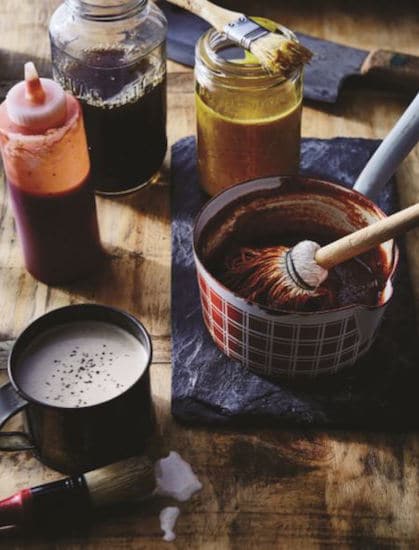
Some say sauce should be a four-letter word. Truth be told, throughout the BBQ belt, you encounter countless variations of sauces — some sweet, while others tend to be more acidic. Whether or not you choose to sauce your meat is entirely up to you.
I asked a buddy and sauce expert Michael McCord to come up with a classic sweet-style sauce (and several others which can be found in the book) that will please nearly any palate.
Ingredients
- 1 cup tomato paste
- 1 cup water
- 1/2 cup firmly packed light brown sugar
- 1/3 cup apple cider vinegar
- 1 1/2 Tbsp. molasses
- 1 Tbsp. onion powder
- 1 Tbsp. chili powder
- 1 Tbsp. fresh cracked pepper
- ½ Tbsp. garlic powder
- 2 tsp. kosher salt
- 1 tsp. celery salt
Directions
- Stir together all the ingredients in a medium saucepan, and bring to a boil over medium-high heat. Reduce heat to medium-low, and simmer until slightly thickened, about 10 minutes. Serve warm.
To Serve
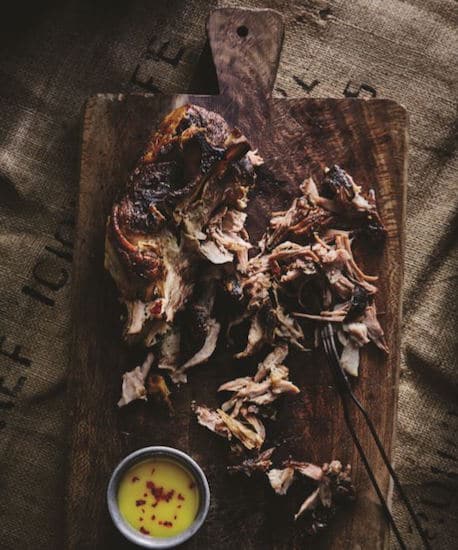
Now the fun part — it’s time to eat.
You can serve the pulled pork as an entrée portion for any dinner or lunch, rounded out with some vegetables and a starch.
Or, you can go traditional by piling the pork high between two buns, a bit of slaw, and whatever else your heart desires.
In the book, I also lay out several other options, including unique twists like BBQ spaghetti.
In the end, you will soon find that cooking up a delicious pork butt is simple and delicious. And trust me, you’ll never get tired of all the unique adaptations you can make to ensure you’ve got the best butt!
________________________
Matt Moore is a regular contributor to the Art of Manliness and the author of The South’s Best Butts: Pitmaster Secrets for Southern Barbecue Perfection.


